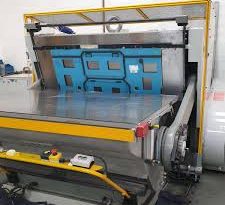Enhancing Safety and Ergonomics in Die-Cutting Operations
As die-cutting continues to be a critical component of manufacturing across various industries, attention to safety and ergonomics becomes paramount. This article highlights the importance of integrating safety measures and ergonomic practices in die-cutting operations, aiming to protect workers from potential hazards and improve overall productivity.
Identifying Potential Hazards
Die-cutting operations, especially with heavy machinery, present several safety risks, including the potential for cuts, pinching, and repetitive motion injuries. Identifying these hazards is the first step in mitigating risks, ensuring a safe working environment for operators.
Implementing Safety Measures
Key safety measures in die-cutting operations include the use of safety guards and sensors to prevent access to moving parts, emergency stop features, and regular maintenance checks to ensure machinery operates correctly. Training programs that educate workers on the safe operation of die-cutting machines and the proper handling of materials are also crucial.
The Role of Ergonomics
Ergonomics plays a vital role in enhancing the efficiency and comfort of die-cutting operations. Designing workstations that allow operators to work without excessive reaching, bending, or strain can reduce the risk of musculoskeletal injuries. Adjustable chairs, anti-fatigue mats, and tools designed for ease of use contribute to a more ergonomic workspace.
Benefits of a Safety-Focused Approach
Focusing on safety and ergonomics in die-cutting operations not only protects workers but also benefits manufacturers by reducing downtime associated with injuries and improving overall productivity. A safe and comfortable work environment enhances employee satisfaction and retention, contributing to a positive company culture.
Future Trends in Safety and Ergonomics
Advancements in technology and automation are set to further improve safety and ergonomics in die-cutting operations. Automated die-cutting systems can reduce the need for direct human interaction with machinery, minimizing exposure to potential hazards. Additionally, the integration of ergonomic design principles in the development of new machinery and tools will continue to reduce the physical strain on operators.
Conclusion
Integrating safety measures and ergonomic practices in die-cutting operations is essential for protecting workers and enhancing productivity. By identifying potential hazards, implementing comprehensive safety protocols, and prioritizing ergonomic design, manufacturers can create a safer and more efficient die-cutting environment. As technology evolves, continued focus on safety and ergonomics will remain crucial in the development of die-cutting operations.



